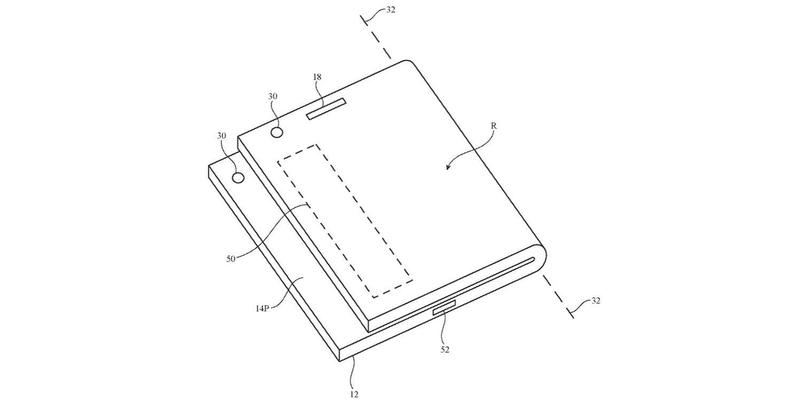Foldable smartphones are nothing new: manufacturers such as Samsung and Huawei have already launched several such models on the market (and they haven’t exactly taken the world by storm). Apple is also said to be working on a foldable smartphone and now a new patent has emerged that shows a helpful feature that could be applied to a foldable iPhone.
A word of caution: it is not uncommon for companies to register patents that never actually get used, so this certainly doesn’t mean that Apple will ever produce a foldable phone that works in this manner, but it is evidence that Apple is working on foldable smartphone technology.
This patent application for a foldable iPhone (discovered by Patently Apple) includes a sketch that shows an iPhone with a hinge – but crucially it is not folded directly in the middle of the device. Instead, the fold occurs below the middle of the device, so that a strip of the screen is exposed in the folded position.
According to the patent application, this exposed strip can be used to display notifications together with status information such as the battery level. Here’s what Apple says:
“Protruding display portion (sometimes referred to as an uncovered display region, protruding display region, uncoverable display region, exposed display edge, uncovered persistently exposed display area, etc.) may be used to display any suitable content. As an example, notifications of incoming messages (emails, text messages, etc.), calendar content (e.g., meeting reminders), alerts (e.g., alarms, location-based alerts, etc.), battery status, wireless signal strength, airplane mode status, and other status information may be displayed on protruding display portion by control circuitry. The uncovered persistently exposed display area may also be used by control circuitry to display icons (e.g., icons associated with default applications and/or a set of frequently used and/or user-defined applications) and/or other content.”
The strip can keep its touchscreen functionality even when folded. As the patent sketch shows, an alternative form of interaction could be on a very small secondary display on the back of the device similar to the Touch Bar on the MacBook Pro.
We have a story rounding up all the news about Apple’s foldable iPhone here.
This article originally appeared on Macwelt. Translation by Karen Haslam.

